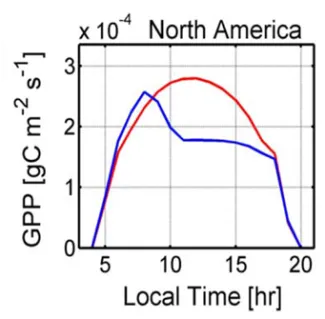Representation of nutrient controls on the terrestrial carbon cycle has large effects on estimates of C-Climate feedbacks with the atmosphere. CLM4.5 and ALMv0 suffered from known structural problems associated with (1) the instantaneous down-regulation of gross primary production from nitrogen constraints; (2) fixed leaf stoichiometry; and (3) the Relative Demand approach to represent plant competition with soil microbes for nitrogen. Bardan Ghimire (LBNL) and others used data from the NGEE Arctic field site on the Barrow Environmental Observatory (BEO) and global traits databases to better understand the origin of these problems and improve process representation and parameterization in CLM5 and ALMv1. Bardan explains that modifications to the models dramatically improved predictions of plant nitrogen uptake and nitrogen constraints on photosynthesis. These results continue to motivate ongoing work aimed at integrating the Equilibrium Chemistry Approximation approach for nitrogen and phosphorus competition in ALMv1.
Reference:
Ghimire B, WJ Riley, CD Koven, M Mu and JT Randerson. 2016. Representing leaf and root physiological traits in CLM improves global carbon and nitrogen cycling predictions. Journal of Advances in Modeling Earth Systems 8: 598-613. http://dx.doi.org/10.1002/2015MS000538
For more information, please contact:
William Riley
wjriley@lbl.gov

